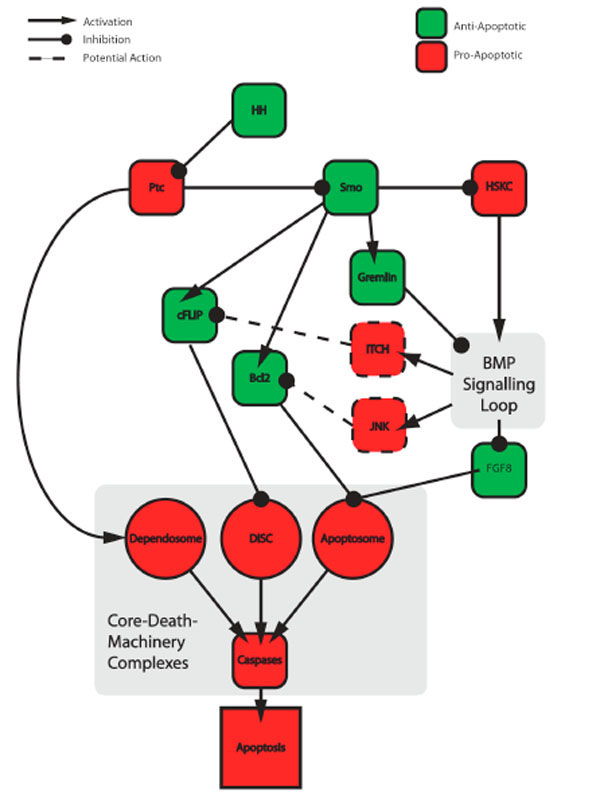Fig. (3) Overview of Apoptotic Regulation by the HH-pathway. SMO activates the Hedgehog signalling kinase complex (HSKC) [119]
that in turn promotes anti-apoptotic actions through GLI-1 and -2 and suppresses pro-apoptotic actions through GLI-3R. The GLI-1 and-2
pathway induces the expression of inhibitors of the intrinsic (Bcl2), extrinsic (FLIP) and GLI-3R-regulated BMP4/7-autocrine (Gremlin)
apoptotic pathways. These distinct apoptotic pathways regulate the indicated Core-death-machinery complexes (red circles = Dependosome,
Death Inducing Signalling Complex (DISC) and Apoptosome). All three complexes activate initiators caspases, which in turn activate
effector caspases and mediate apoptosis. GLI-3R governs a pro-apoptotic autocrine-signalling loop, by transcriptionally upregulating Bone
Morphogenic Proteins 4/7 (BMP4/7). These then bind the Bone Morphogenic Protein Receptor 1 (BMPR1), repressing FGF8 expression and
activating JNK. Phosphorylation of JNK substrates leads to inhibition of the anti-apoptotic molecules Bcl2 (B-cell lymphoma/leukaemia 2
gene) and FLIP (Flice/Caspase-8-Inhibitory Protein) – see text for details. Anti- and pro-apoptotic proteins (round-edged squares) are
labelled green and red respectively. Please see Figure 2 for a more detailed schematic of the Dependosome.


